Aquarium dwellers with yellow or orange body coloration are extremely popular. And the point here is not only that the color is immediately evident. These colors give the aquarium notes of warmth, light, energy, multiplying the relaxing effect. In our article, we will tell you about one aquarium “sun” – the Mexican dwarf crayfish.
General information
Mexican dwarf crayfish (Cambarellus patzcuarensis var. Orange) is a freshwater crustacean from the order Decapod crayfish. You can also find the designation by the first letters of the Latin name – CPO crayfish. This Central American is distinguished by its diminutive size, unpretentious care, and feeding, as well as stunning orange or red body coloration. All this makes it an ideal candidate for keeping in a home aquarium.
Popularity is also added by the fact that crayfish do not have to be kept in a species aquarium: it gets along well both with some popular fish and with living plants.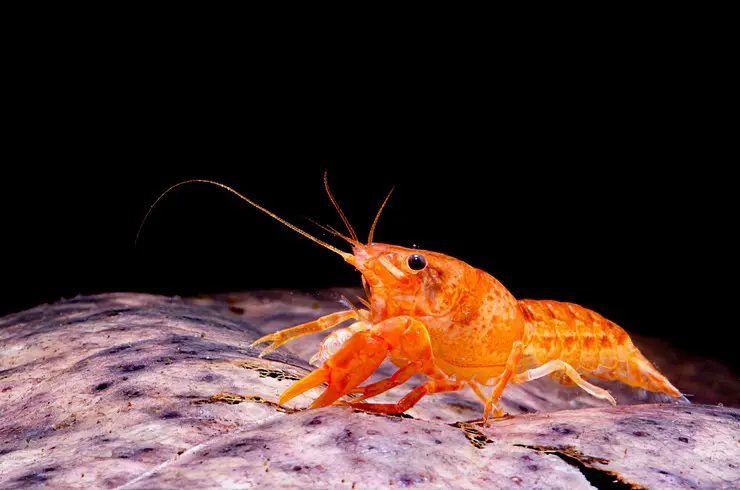
It should be noted that the beautiful orange “skin” of the Mexican dwarf crayfish is the result of the work of breeders because in nature such colors will make it easy prey for predators. In the aquarium, he has no one to fear, so crayfish continue to delight us with bright outfits.
Interesting forms of behavior are also characteristic of crayfish: “arranging” their shelter, regular molting, mating and bearing offspring, clashes over territory. And what is the moment when the crayfish is hungry – it runs along the wall of the aquarium, raising its claws. These pets love to hang upside down, clinging to the stems of plants, such a “ritual” can last several hours and sometimes bewilder novice crustaceans.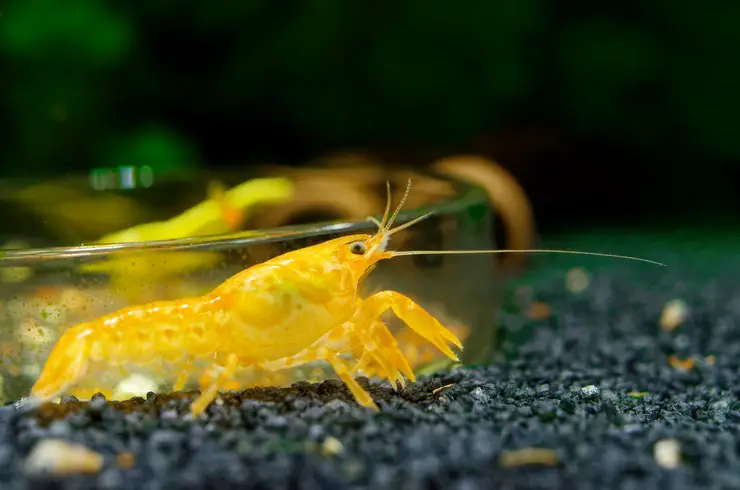
Mexican dwarf crayfish are diurnal, making them easy to observe in your home aquarium. Rarely does an aquarium animal bring such a storm of emotions and surprise?
Appearance
If you have ever seen ordinary crayfish, then it will not be difficult for you to imagine the appearance of the hero of the article. The body consists of the sections characteristic of crustaceans: a dense cephalothorax and a movable abdomen, ending in a wide caudal fin. The first section serves as a place for fixing walking legs (five pairs, the first ends with massive tentacles), jaws, and sensory organs. Under a dense shell (carapace), the internal organs of the crayfish are under reliable protection. The abdomen consists of articulated segments, under which the swimming legs are located – the pleopods. They participate not only in swimming but also in reproduction. For example, in the male one of the pairs has become a copulation organ, and the females use them to carry eggs and young crustaceans.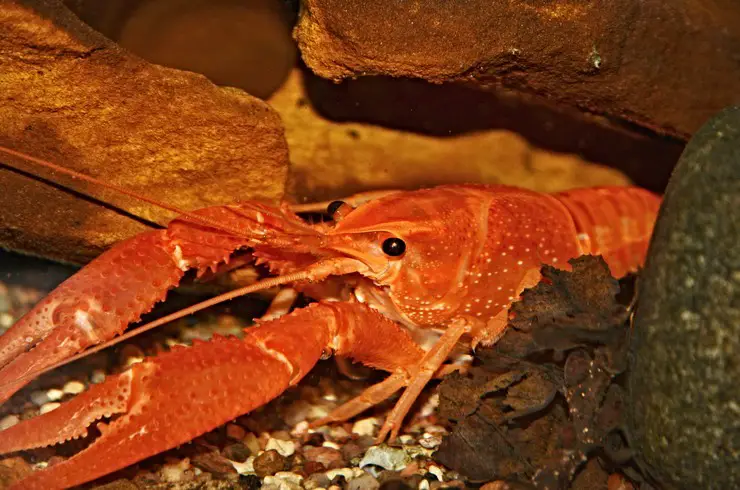
The most popular body color is red-orange, the intensity of which can vary. Dark or light stripes, as well as small rounded spots, may be located along with the head and tail. The body length does not exceed 5 cm.
Life expectancy in aquarium conditions is 2-3 years.
Habitat
As you might guess from the name, the birthplace of dwarf crayfish is the territory of Mexico. One of the most famous places of distribution is the volcanic lake Lago de Patzcuaro (Mexican Pacific coast), which is located at an altitude of 2000 m above sea level, so the water in it remains relatively cool even in summer.
Crayfish live mainly in stagnant water bodies, or in streams and rivers with a slight current. They stay near the coast because it is here that it is easiest to find suitable shelters among the roots of trees or rocks of the coastline.
Care and maintenance
To keep a pair of Mexican dwarf crayfish, you need an aquarium of 50 liters or more. It is best if it has the maximum bottom area because this is where almost the entire life of crayfish passes.
Coarse sand or medium pebbles are suitable as soil. It is better to make the layer thicker since crayfish are very fond of digging up the bottom.
In an aquarium with Mexican dwarf crayfish, there should be a wide variety of hiding places. This will help your pet to divide the territory, if several individuals live in the container, hide during molting when the uncured cover is very vulnerable, and the females also preserve their offspring. Any materials at hand are suitable as shelters: grottoes, ceramic pots, hollow tubes with a diameter of 2-5 cm, coconut shells, etc. Often, crayfish arrange an impromptu door near the entrance to the shelter – they rake a pile of soil that closes the entrance when they leave the house, they dig it up, and upon their return, they bury it again.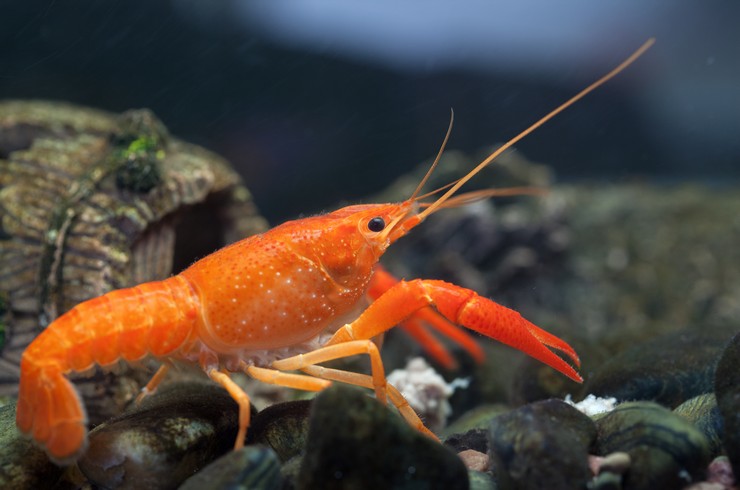
The aquarium must be equipped with a filter. This is necessary to maintain the purity and high quality of the water because crayfish are sensitive to high levels of nitrogenous compounds. It is better to give preference to internal filters. This is due to the fact that Mexican crayfish are excellent “climbers”. They can easily climb up the tubes of the external filter and escape through the technological holes. Unfortunately, such a journey will be fatal for crayfish if it is not returned to the aquarium in time, since they cannot live long without water. Particular attention must be paid to aeration. For crayfish, oxygen dissolved in water is vital, so it is worth choosing filters with air supply, or even better, installing a separate compressor. The problem of lack of oxygen in the summer is especially relevant because it dissolves much worse in warm water.
Mexican dwarf crayfish are good for living plants. The only threat is the possibility of root digging. Most often, unpretentious plant species are recommended: bunches of Java moss, hornwort, cryptocoryne, ferns. It is advisable to run a pistia or riccia on the surface of the water – they create a natural twilight since crayfish do not like bright lighting.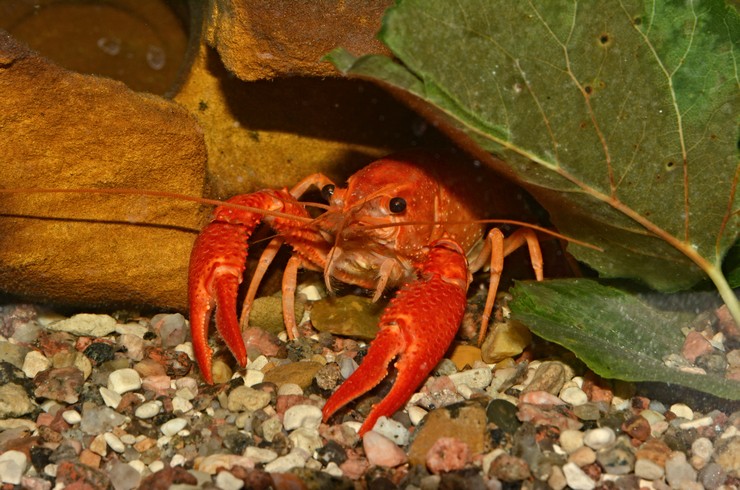
Once a week, 20% of the water in the aquarium should be replaced with freshwater, and the tap water must be prepared with the Tetra Crusta AquaSafe conditioner, which removes compounds dangerous to crayfish from the water.
The water for keeping crayfish should not be too soft, as arthropods require minerals to form their shells.
Optimum water parameters for the content: T = 18-25 ° С, pH = 7.0-8.5, GH = 10-20.
One of the peculiarities in keeping crayfish is their periodic molt. It consists of shedding the old cover, which no longer allows crayfish to grow, and the formation of a new one, during this period the crustaceans increase in size until the shell hardens. During this time, Mexican dwarf crayfish are the most vulnerable, because, without a protective cover, even peaceful species of fish can offend them, not to mention their own relatives. Molting also allows you to grow new limbs lost in battles when crayfish are kept in a group. It is very important not to throw away the discarded cover from the aquarium, it will be eaten by the owner, and its nutrients will be used to build new “clothes”.
Compatibility
Mexican dwarf crayfish are distinguished by their peaceful nature. Intraspecific aggression takes place, but it tends to zero in the absence of overpopulation and a large number of various shelters. In such situations, even possible fights end happily.
Crayfish have a calm relationship with fish. Most often, mobile neighbors are an additional source of stress for crayfish, which, when they appear, try to hide in a shelter as soon as possible. Even long-term cohabitation with the same species does not make arthropods less fearful.
On the other hand, a hungry crayfish will, like a tank, move towards the coveted food, pushing even fish larger than itself.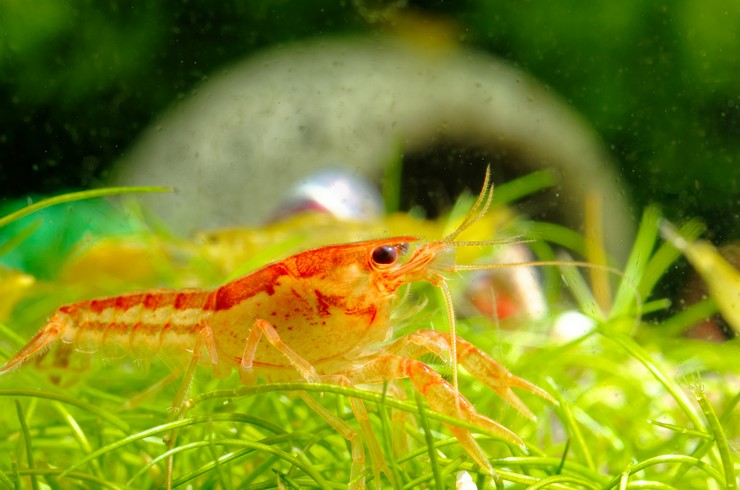
Moving medium-sized fish are best suited for joint keeping: mollies, platies, barbs. Relations with bottom fish are also usually good, despite the need to divide the territory, so corridors, toracatums, ancistrus, battles can be lodged with crayfish without fear.
Of the undesirable species, various cichlids can be distinguished (black-striped cichlazoma, severum, akara, astronauts, etc.), as well as shrimps and crabs.
Feeding the Mexican pygmy crayfish
Nutrition for the Mexican pygmy crayfish is the smallest of the problems in keeping. These animals are completely omnivorous, the origin of food does not play any role for them. Dead plant parts, dead fish, dry food – all this will be eaten by crayfish with pleasure. It is better not to use widespread live and frozen foods, they do not contain the whole complex of nutrients required by crayfish, and in addition, they can very quickly spoil water if they are not completely eaten by pets.
It is best to opt for quality dry food for crustaceans Tetra Crusta. These fully balanced foods will provide your crayfish with everything it needs, including the nutrients for good shedding. They quickly sink to the bottom and retain their shape for a long time, which makes it possible to feed the crayfish even in shared aquariums. At the same time, the feed does not cause cloudy water and deterioration of its quality. Also, crayfish will perfectly eat universal food for catfish and bottom fish – Tetra WaferMix or Tetra Pleco SpirulinaWafers.
Additionally, you can feed the crayfish with dried oak leaves or Indian almonds.
Reproduction and breeding
Getting offspring from a Mexican dwarf crayfish at home is easy. You will need a couple of producers and a small spawning aquarium of 20-30 liters.
Puberty in crayfish occurs very early – at 3-4 months. Distinguishing between male and female is easy enough. First of all, pay attention to the claws: the female has them short and thick, although she herself is larger than the male. In males, the claws are elongated. To confirm the information, take the crayfish and turn it on its back, then look at the first pair of pleopods – in the male, it is lanceolate, long (copulation organ), and in the female it is short.

